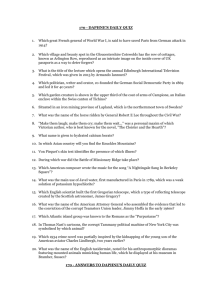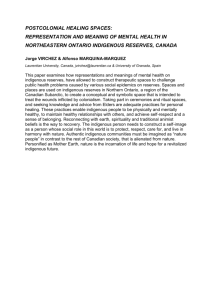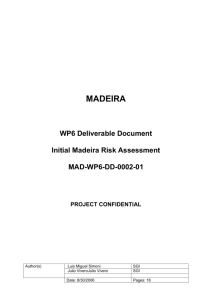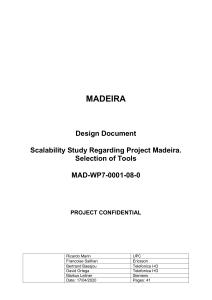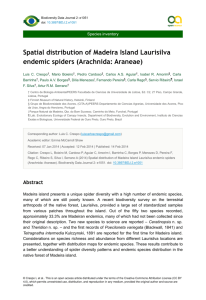İkinci dava:
advertisement
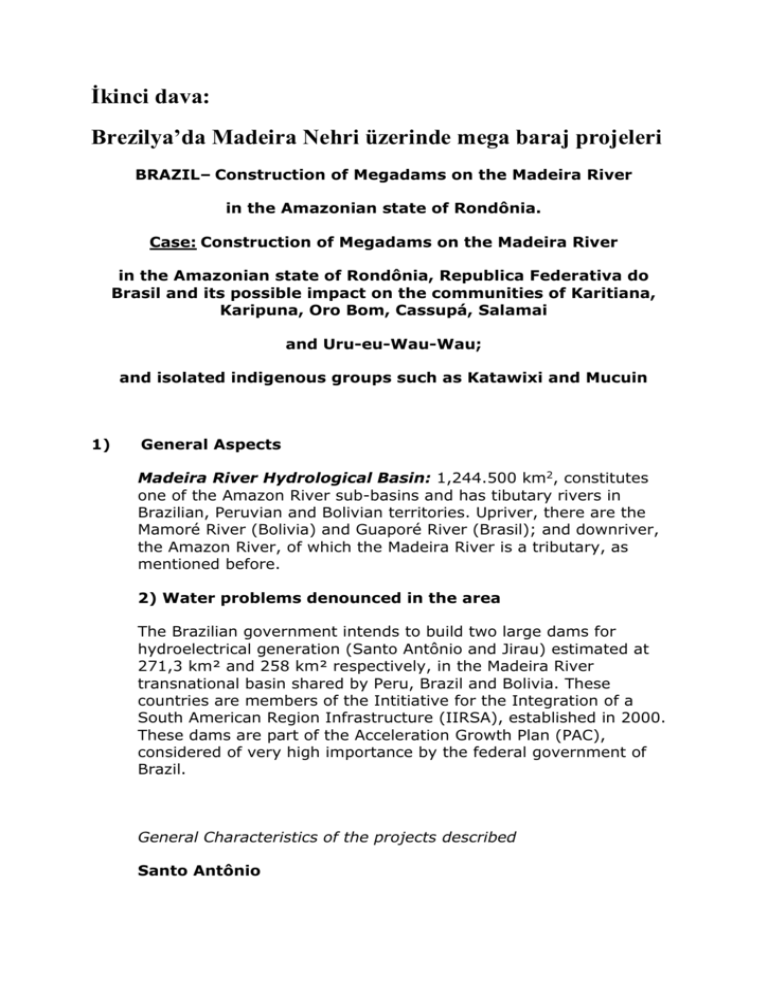
İkinci dava: Brezilya’da Madeira Nehri üzerinde mega baraj projeleri BRAZIL– Construction of Megadams on the Madeira River in the Amazonian state of Rondônia. Case: Construction of Megadams on the Madeira River in the Amazonian state of Rondônia, Republica Federativa do Brasil and its possible impact on the communities of Karitiana, Karipuna, Oro Bom, Cassupá, Salamai and Uru-eu-Wau-Wau; and isolated indigenous groups such as Katawixi and Mucuin 1) General Aspects Madeira River Hydrological Basin: 1,244.500 km2, constitutes one of the Amazon River sub-basins and has tibutary rivers in Brazilian, Peruvian and Bolivian territories. Upriver, there are the Mamoré River (Bolivia) and Guaporé River (Brasil); and downriver, the Amazon River, of which the Madeira River is a tributary, as mentioned before. 2) Water problems denounced in the area The Brazilian government intends to build two large dams for hydroelectrical generation (Santo Antônio and Jirau) estimated at 271,3 km² and 258 km² respectively, in the Madeira River transnational basin shared by Peru, Brazil and Bolivia. These countries are members of the Intitiative for the Integration of a South American Region Infrastructure (IIRSA), established in 2000. These dams are part of the Acceleration Growth Plan (PAC), considered of very high importance by the federal government of Brazil. General Characteristics of the projects described Santo Antônio Installed Potential: 3150 MW; it will be located 7 kilometres from Porto Velho’s capital. Height of the dam: 55 metres. Total area of resulting reservoir: 271,3 km2. Jirau Installed Potetiall: 3300 MW, se construirá a 120 kilómetros de la represa de Santo Antônio. Height of the dam 35,5 metros. Total area of resulting reservoir: 258 km2. According to what is projected, both dams would together supply 8% of Brazil’s energy demand. The capacity of these two dams almost represents half of the energy generated by the dam of Itaipú. The resolutions ANA No. 555 (for the Jirau project) and ANA No. 556 (for the Santo Antônio project) grant rights-of-use of hydrological resources for these dam projects. The Madeira Consortium Energy S/A was identified as the one that obtained the bidding for the Santo Antônio project, and it is formed by the following companies: Oderbrecht Investimentos in Limited Infrastructure (17, 6%), Constructora Norberto Orderbecht S.A. (1%); Andrade Gutiérrez Participações S.A. (12.4%); CEMIG Geração e Transmissão S.A. (10%), Furnas Centrais Elétricas S.A. (39%) and Fundo de Investimentos e Participações Amazônia Energia (FIP, constituted by the banks BANIF and Santander) (10%). With respect to the Jirau project, the Consorcio Energía Sustentable do Brasil (CESB), constituted by: Suez Energy South America Participações Ltda. (50.1%); Camargo Strap Investimentos em Infra-Estrutura S/A (9,9%); Eletrosul Centrais Elétricas S/A (20%); and Companhia Hidro Elétrica do São Francisco (CHESF) (20%). It is estimated that both hydroelectric projects must begin operation in 2012. The Bolivian government, a country that shares the Madeira River basin, appealed the project at the beginning of the preliminary informationgathering stage, given the proximity of the Jirau and Santo Antônio projects to the Bolivian border (84 and 190 kilometers respectively). Estimated cost of works: 9.672.720 and 9.300.076 million Brazilian reales. Denounced activity: Violations to the right of public participation in the process of granting environmental license, by the indications of serious environmental, national and cross-boundary damages; and by the threat to physical and territorial integrity of indigenous towns and of isolated indigenous groups. Estimated cost of work: 9.672.720 and 9.300.076 million Brazilian reales. Demanding stakeholder: Associacao de Defesa Etnoambiental Kanindé In opposition to: Federal Government of Brazil, through: Advocacia Geral da Uniao (AGU) Iniciativa para la Integración de la Infraestructura Regional Sudamericana (IIRSA) The Associacao de Defesa Etnoambiental Kanindé points out the following social and environmental irregularities: Public hearings providing information about the projects with the local communities were unsatisfactory, especially, in regards to the social issues involved. Environmental impact studies of both projects neglectful as far as the indirect impact to little known and isolated indigenous villages, such as Karitiana, Karipuna, Gold Bom, Cassupá, Salamai, Uru-USA-Wau-Wau; Katawixi and Mucuin were concerned. Non-clarified points and unheeded social plans. Exhaustion of possibilities for dialogue and social participation in the process of decision-making regarding social and environmental impacts. Protests of civil groupings against bidding laws, and police repression. Questionings on the part of the Bolivian state, that indicates how dams would invade (and flood) its territory, alter the hydrological regime and threaten inhabited localities with flooding. Incursion on indigenous populations, some of them isolated and little known, as a result of the migration of workers searching to be employed. Violation of Art. 2º, item III of the FUNAI regulation that establishes: to guarantee to the indigenous people and groups that are isolated, the right to remain the way they are, maintaining the integrity of their territory. Possible social and environmental risks and damages associated with the described irregularities Threat of flooding communities located in the zone of dams, as much in Brazilian as in Bolivian territory. Damages to isolated indigenous villages in the states of Rondônia and Amazonas, their culture, freedom and protection of their physical limits. Collateral consequences in aquatic biodiversity, fishing (i.e. catfishes), sources of sustenance and nutrients for the river-edge populations, health and tourism. Alteration in the hydrological cycle of the Madeira River near the dams. Potential for an international conflict, in which the Bolivian State has indicated its disposition to obtain international justice on this subject, given the possibility of inter-state and international cross-boundary damages, as much in its neighboring Amazon state as in Bolivia. Deterioration of the economic conditions of approximately 2,400 fishermen from the state of Rondônia, as a result of the alteration of biotic communities in the river. Fishing here contributes 5 to 6 million tons of fish daily to the city of Porto Velho. Loss of agricultural production for the populations based downriver from the dams, due to the loss of annual deposition of fertile mud sediments on flooded plains. Significant flooding of great extensions of the Amazonian forest given the dimensions of the dams, with loss of biodiversity and infringement of species in danger of extinction (i.e. jaguar, Panther onca). Flooding of indigenous lands, and of historical and archaeological patrimony. Loss of traditional means of subsistence. Documented evidence presented by the Associacao de Defesa Etnoambiental Kanindé Institutional actions Work-plan: Arranged activities for the regions where references of isolated indigenous peoples exist that will be affected by the Santo Antônio dam. Fundação Nacional do Índio; Diretoria de Assistência Coordenação Geral dos Índios Isolados. Ministério da Justiça. Management of denouncers Open letter to civil society institutions about the judging for the denunciation of violations of constitutional indigenous rights by the Madeira River energy power complex project before an instance of environmental justice. Maps Maps of hydrographic river basins, with Amazon trans-boundary tributary rivers. Legal frame Chapter VIII, artícle 231 of the Federal Constitution of the Federal republic of Brazil. Law Nº 8.183/1991. Portarias No. 260, 268, 269, 272, 274, 281, 290, 292 y 294/PRES given by FUNAI (20/04/2000). On September 11, 2008 the Latin American Water Tribunal jury attended this case in the public hearing “hydrological justice in the lands and territories of indigenous towns,” that took place in Antigua, Guatemala. The released verdict censors the Brazilian government for ignoring indigenous rights when not applying the OIT’s Agreement 169, and due to the intention to construct works having great social and environmental impact, which will have a useful life of less than 50 years (see verdict).
